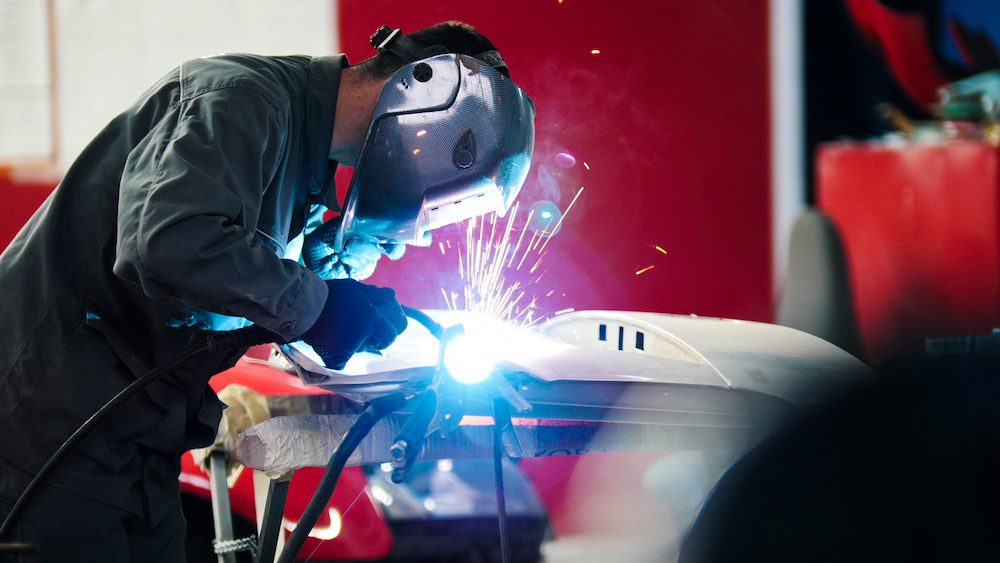 A factory production control system is essentially a documented quality system that enables you to:
A factory production control system is essentially a documented quality system that enables you to:
- Monitor, document and demonstrate that you are meeting all the processes, technical specifications and performance standards required for fusion welded products
- Keep records of any non-conforming products, processes or materials to make any requisite improvements
AS/NZS ISO 3834 builds factory production control into welding management to ensure quality, optimise manufacturing costs, and reduce expensive repairs and rework.
Factory product control is a structured approach that covers all phases of the welding process, each of which is outlined below.
1. Requirements and Technical Review
Before submitting a proposal, manufacturers have a duty to review contractual and other requirements to confirm that all required information and specifications are available, and the scope of work is within their capabilities. This review process helps avoids costly misunderstandings and variations after the quotation or purchase order stage. It also gives the client confidence that the welded product will not only be compliant, but will be delivered on time and to budget.
2. Sub-contracting
Manufacturers often sub-contract out parts of the fabrication process (such as welding, inspection, NDT, heat treatment, and so on), whilst retaining ultimate responsibility for the quality of the product delivered. Evaluation, control, transmission and recording of documentation and information pertaining to sub-contractor processes ensures that all specifications and quality standards are met as if the process had been handled in-house.
3. Personnel
AS/NZS ISO 3834 increases the technical knowledge of all levels of personnel involved in the welding process, from trades and inspectors, through to supervisors and management. Increased technical understanding ensures that the workforce possesses all necessary capabilities and authority to deliver each project.
In addition, having well defined roles and responsibilities for personnel helps optimise the production process by avoiding duplication and omission of tasks.
3.1 The Responsible Welding Coordinator
AS/NZS ISO 3834 emphasises the importance of the Responsible Welding Coordinator (RWC). Usually, welding roles and tasks are shared amongst several people, under the leadership of a nominated RWC. As they assume responsibility for all welding activities, the knowledge, authority and competency of the RWC is of paramount importance. Companies that are not ready to train or employ a RWC can sub-contract out this responsibility.
4. Equipment
Maintaining accurate, up-to-date equipment records enables manufacturers to provide potential clients an immediate snapshot of their capabilities, and can help manufacturers identify areas for expansion. In addition, accurate records help ensure that equipment undergoes regular safety and performance inspections and maintenance, keeping productivity high and minimising delays due to equipment break-downs.
5. Planning
Proper Planning Prevents Poor Performance. Detailed planning of welding activities, from the fabrication sequence through to the development of welding procedures and environmental constraints, enables a manufacturer to accurately estimate project scope and timeframe. In-depth project planning, from the tender to the delivery of the product, instils confidence in the client that the product will be delivered within the promised timeframe.
6. Inspection
It is impossible to make a complete verification of a welded joint without destroying it. As such, inspection after completion does not guarantee weld serviceability. Quality must be built into the weld, with inspections carried out prior, during, and after welding. By maintaining detailed records of inspections and nonconformance issues, manufacturers can deliver quality welded products, and convert every non-conformance issue into an opportunity for improvement.
7. Storage and Traceability
The materials used contribute significantly to the quality of the final welded product. The correct plates, forgings, castings and consumables must be selected during the procurement phase. All these materials must then be carefully stored to avoid mixing, scrapping and damage, as well as the use of unidentifiable materials.
Keeping in-depth, accurate storage and traceability records gives clients peace of mind that a manufacturer has full control over its processes and, therefore, the final product. Storage and traceability records also help manufacturers maintain rigorous expense management processes, and reduce unnecessary waste and product rejection.
How to Get Certified to AS/NZS ISO 3834
Ready to have your organisation certified to AS/NZS ISO 3834? You can:



